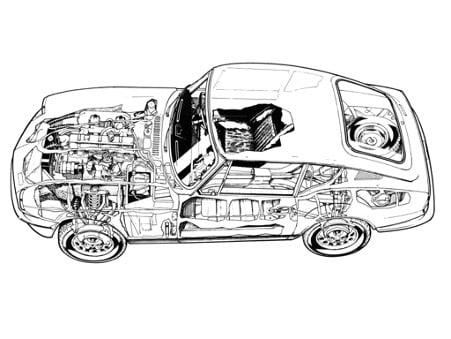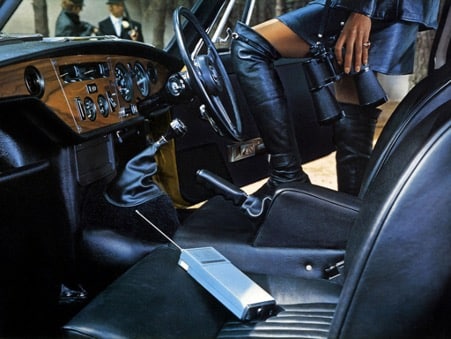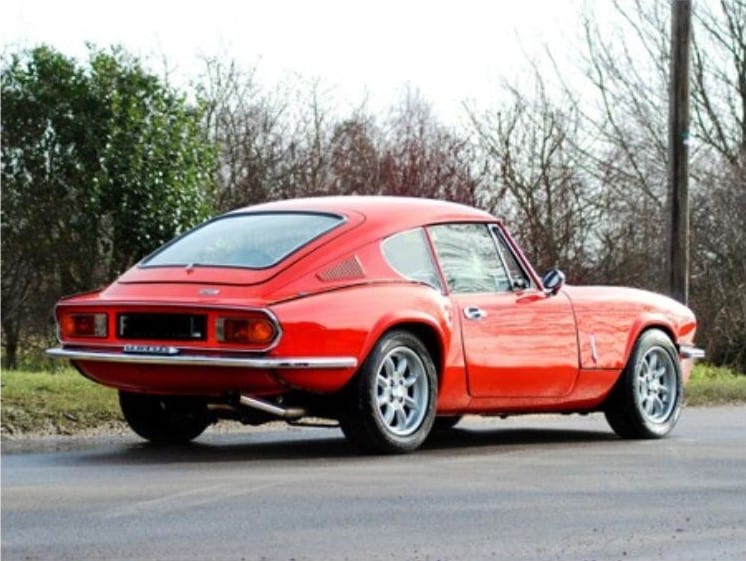Everybody knows about the Triumph Spitfire, one of the coolest, most successful classic roadsters and quintessential British cars of the 20th century. However, not a lot of people know that Spitfire had a bigger coupe brother with a six-cylinder motor and body that was shaped on 24 Hours of Le Mans. Even though it is a bit forgotten by mainstream collectors, Triumph GT6 oozes elegance throaty straight-six engine, and a lightweight body, promising an unforgettable driving experience. Here is why this great-looking coupe should be better known and why its prices are steadily growing.
The Triumph Motor Company was one of the best-known British performance brands in the 60s, with a lineup of several roadster models and sporty two-door and four-door sedans. In 1962, Triumph introduced the Spitfire, a sleek two-door roadster that remained in production for almost 20 years and defined its segment, selling in massive numbers and on both sides of the ocean. The Spitfire had simple but effective construction and proved to be a sound basis for a race car. However, immediately after the introduction, Triumph’s product planners decided that the coupe would be an excellent addition to the lineup. At the same time, the company started the racing program with modified Spitfires with a fastback top called the GT4. With a lightweight construction and dependable mechanics, Triumph managed to win some races, but the biggest triumph was in 1965 when Spitfire GT4 won its class in 24 Hours of Le Mans, finishing 13th overall.

When MG, Triumph’s arch enemy, announced the introduction of GT, the coupe version of the popular MG B roadster, Triumph managers realized that the closed version of Spitfire was overdue. So, the company contacted Giovanni Michelotti, the original designer of Spitfire, and asked him to create a coupe version. After a few attempts, Michelotti used racing GT4s as an inspiration giving the Spitfire’s shape a cool and modern fastback look with an opening hatch and more room in the interior. However, Triumph’s engineers realized that the coupe body was heavier than the roadster one and that the new model would need a more powerful engine. The solution was a 2.0-liter, six-cylinder unit from Triumph Vitesse, which delivered 95 hp and 117 lb-ft of torque.

When the car was ready for its official debut in 1966, Triumph’s engineers realized that they had changed more than a few things from the Spitfire, so the vehicle deserved its own name. Triumph GT6 emphasized the grown-up character, Gran Turismo capabilities, and six-cylinder engine, which was the biggest selling point. With 95 hp on tap and a body that weighed 1,900 pounds (850 kg), the GT6 was dynamic enough to catch the attention of the buyers and motoring press. The GT6 was more expensive than the Spitfire, but it was also more luxurious, more spacious, and faster, which justified the price. Triumph’s marketing department used Le Mans success to promote its performance; even though the GT6 didn’t have anything to do with the GT4 racing program, the stunt worked. They even launched a semi-official nickname, “Poor man’s E-Type,” which also stuck for obvious reasons. Both cars were British, had similar proportions, and were designed and powered by six-cylinder engines. Of course, E-Type was faster, but with 0 to 60 times in just over 10 seconds, GT6 Mk1 was considered dynamic by the standards of the day. However, the automotive press criticized the swing axle design borrowed from Spitfire. Due to the additional weight of the GT6 and more power, it wasn’t the best solution.

The Triumph GT6 Mk II was announced in late 1968 with numerous improvements. The company addressed handling criticism with the heavily revised rear suspension, which delivered far better control and finally provided GT6 with the stability it needed to be competitive. The design was improved with a new front and rear end, different bumpers, and details, similar to Spitfire. However, the engineers didn’t forget the engine. With new camshafts, a new cylinder head, and an intake, the six-cylinder delivered 104 hp. Not much, but it improved performance and even fuel economy. In America, this version was called Triumph GT6+ due to all improvements made.


After a relatively short seven years on the market (compared to Spitfire’s 18 years), Triumph made over 41,000 cars in three distinctive series. Concentrating on America, which was its biggest export market, Triumph was constantly battling the MG B GT, which sold better and was also available with a V8 engine in later versions, but also with numerous other models. The early ‘70s was a great time for small sporty coupes, and GT6’s competitors included the Alfa Romeo GTV, Porsche 914, and Datsun 240Z, which borrowed a lot from GT6 in terms of design, concept, and layout.

The early ‘70s recession put an end to any possible official racing program, but the GT6 still saw a fair amount of track time in the hands of private teams, mainly in the US. It also was a notable competitor in Group 44 racing in the early ‘70s and scored several wins. Years after its lightweight chassis, small and aerodynamic body was an excellent basis for amateur racing machines.

Although GT6 was not as successful on the market as Triumph hoped it would be, it was still highly regarded by classic car connoisseurs and sports car lovers. That is why it got a very special homage in 2007 in the form of the BMW Z4 Coupe (E86). When BMW bought Rover in 1994, it also bought several defunct British Leyland brands, including Triumph. Chris Bangle, the famous BMW designer chief, was always a big Triumph GT6 fan and decided to make a modern-day version of this car as a BMW Z4 Coupe. Using the same proportions, fastback roofline, similarly designed side windows, six-cylinder engine, and the concept, the Triumph GT6 got its modern version and proper recognition of its qualities and design.





